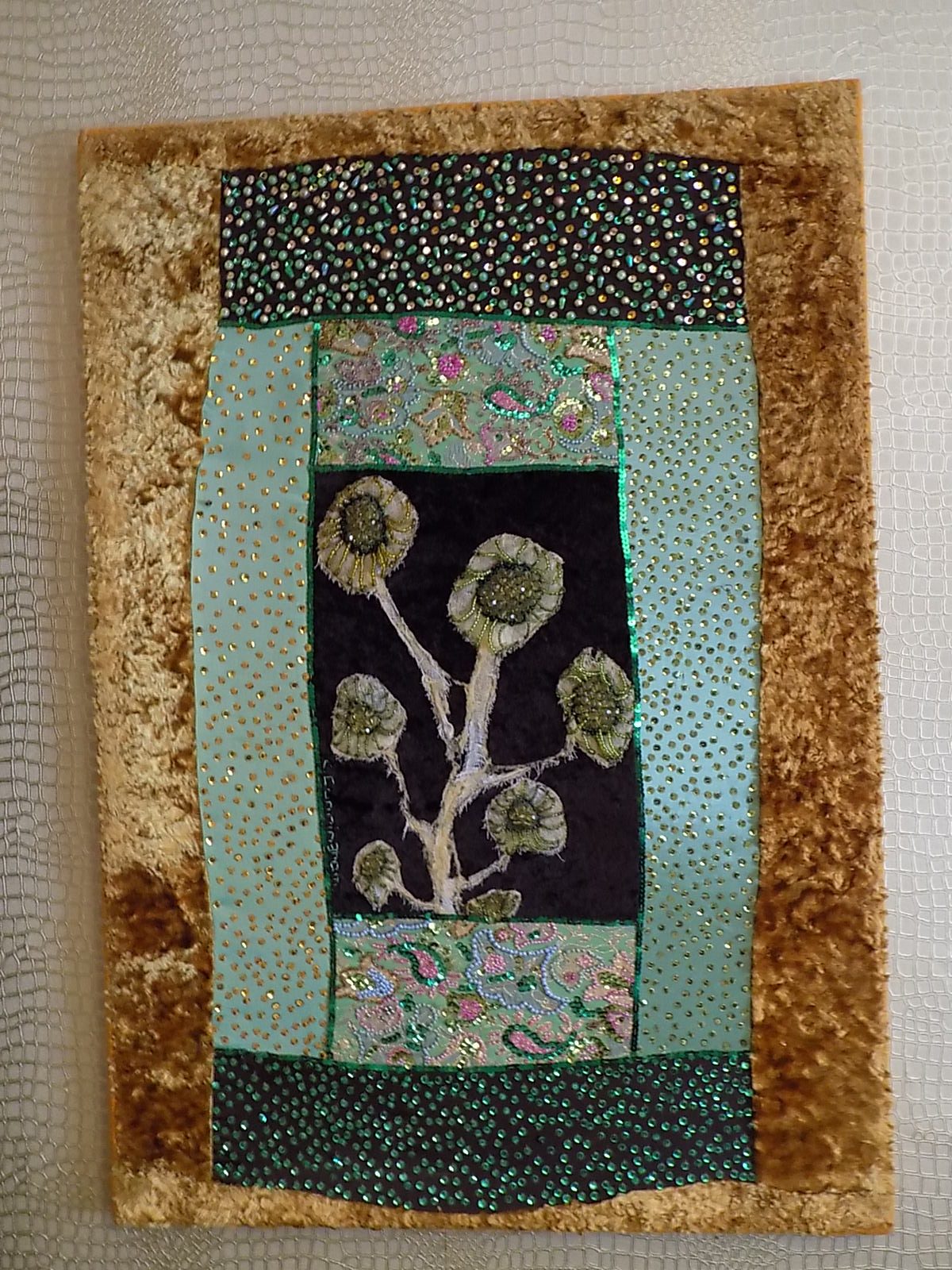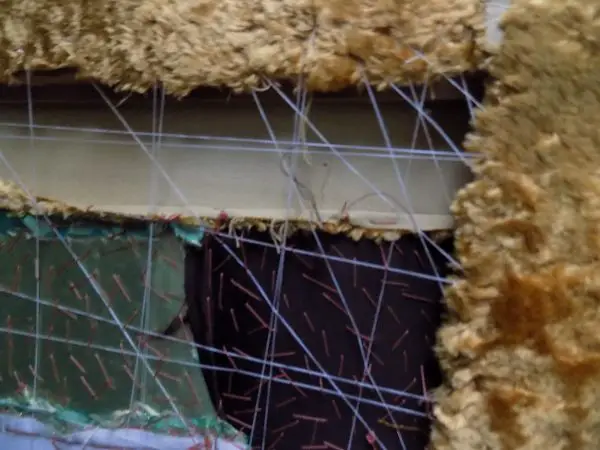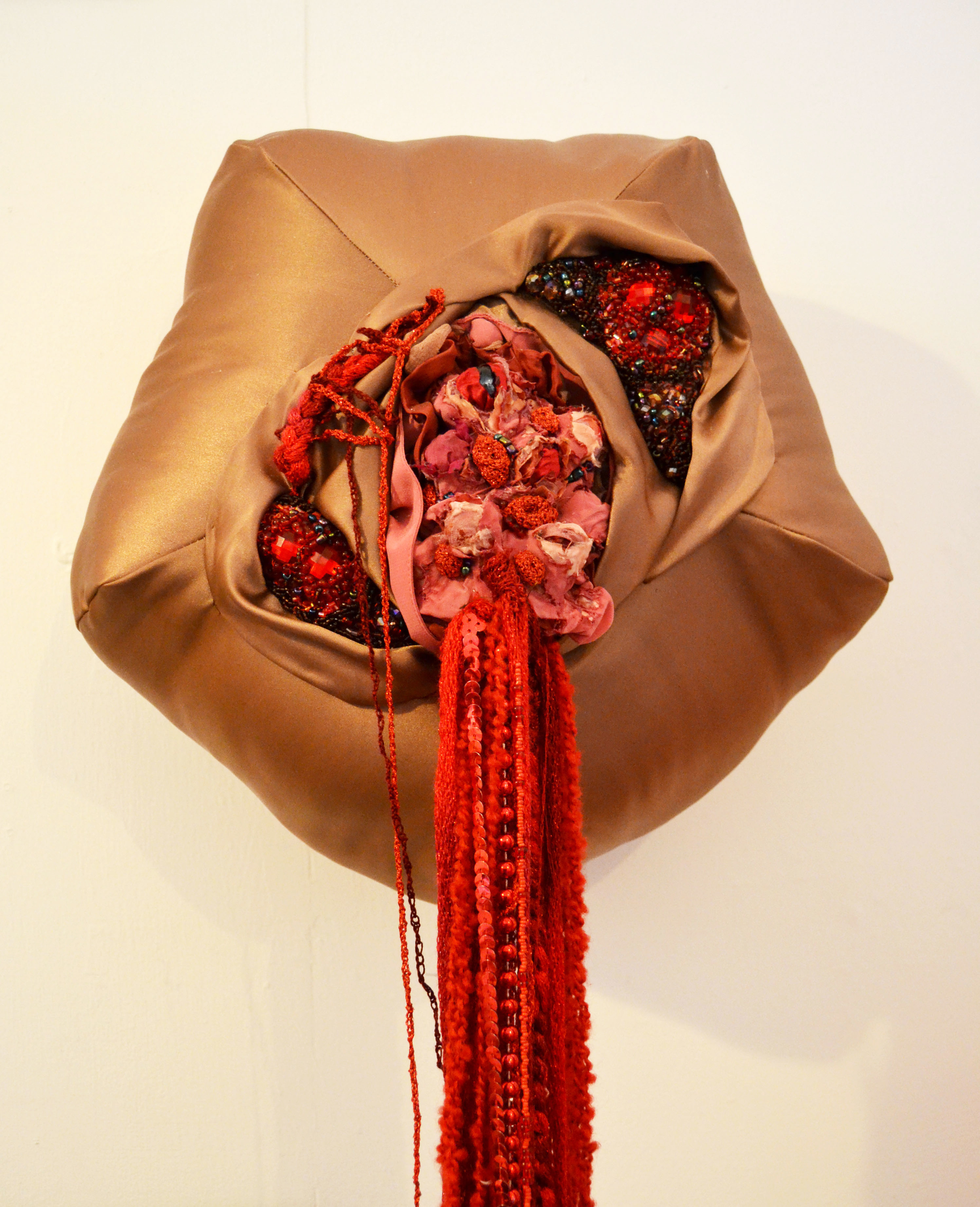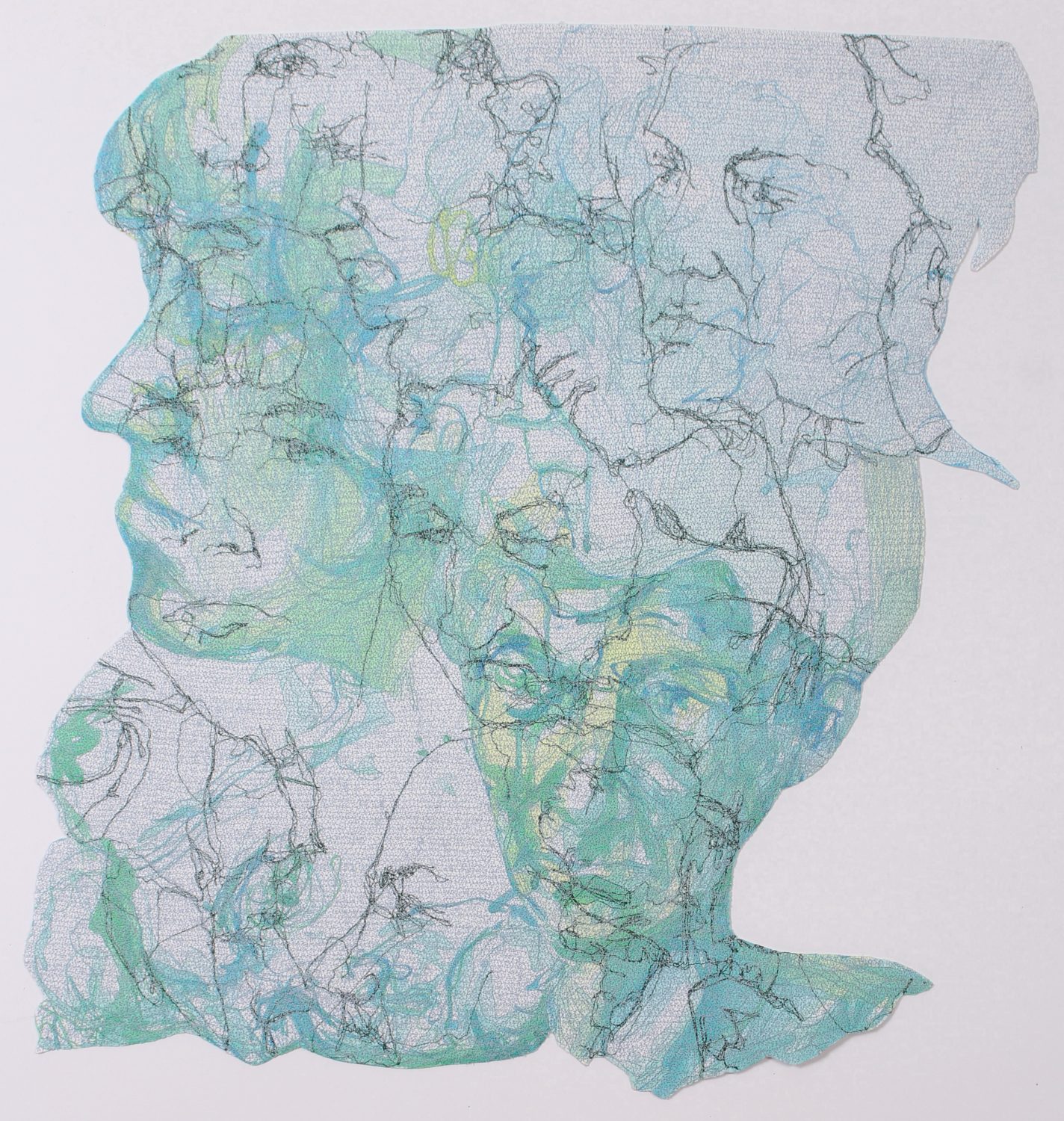
When considering the hanging of your textile creation you have two options – a FRAMED STRUCTURE or a hanging sleeve. I have used both with very different results. Today we will explore how to wrap your textile around a wooden frame, HANGING TEXTILES and consider STORAGE and POSTAGE options.
FRAMED STRUCTURE
A solid framework determines the size and shape over which you can stitch your textile, providing a good finish with a straight outline. You can cut your background fabric to size or create freestyle. A glass plate prohibits any surface embellishment with additional depth (beads, sequins, jewels) and for this reason I wrap and stitch my textile onto the frame which is then hidden beneath a backing fabric. Choose a light weight wood to limit additional weight.
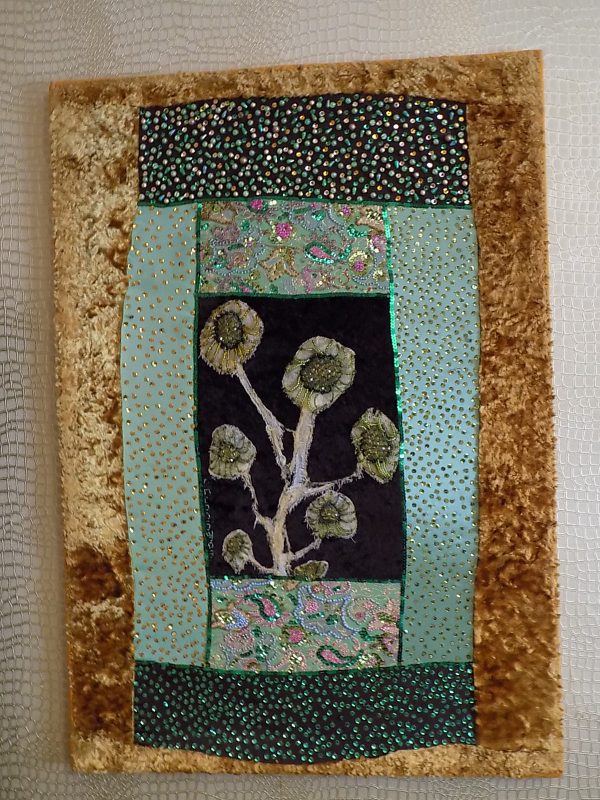
An intricate layering system of stitching across the vertical, horizontal (starting at the mid section, working outwards) and corners ensures all areas are considered, to be revised until the surface is pulled taut, like a drum. Use thick thread or double up a cotton to avoid snapping. Colour matching is not necessary. A backing fabric will cover all internal threadwork for a neat finish.
Depth will be determined by the frame itself and I have found no need for additional padding. A simple over stitch secures backing fabric to the textile along the edge of the frame, pinned in place to secure tension before stitching.
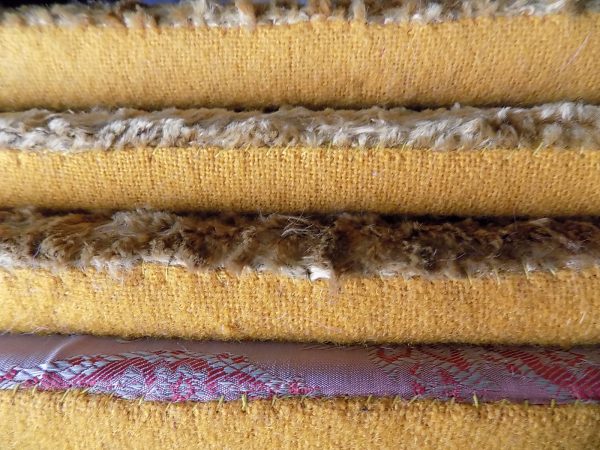
Corners can be tricky. To achieve a neat seam trim so you have just enough fabric to turn under at the stitch edge.
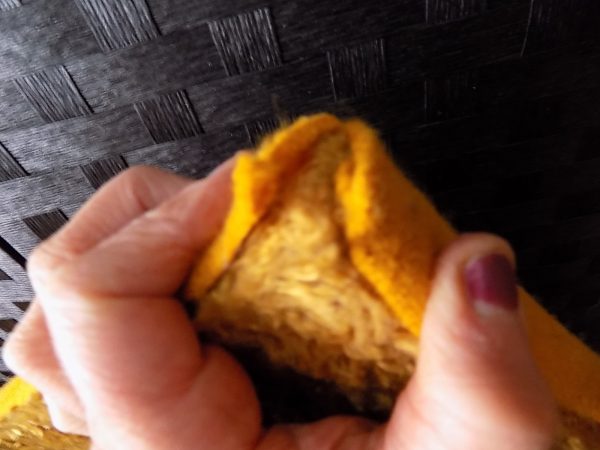
HANGING TEXTILES
Creating an eyelet hides the hanging wire beneath the backing fabric, providing a neat finish with a woolen overstitch. You must ensure the wire is securely attached because it is now encased within a stitched framework. I use a metal hanging wire which is strong and versatile, created from individual strands twisted together, similar to a thread. Wrap securely around the head of the screw and back along the length of hanging wire. Or you could simply attach the wire on top of the backing fabric like a traditional frame.
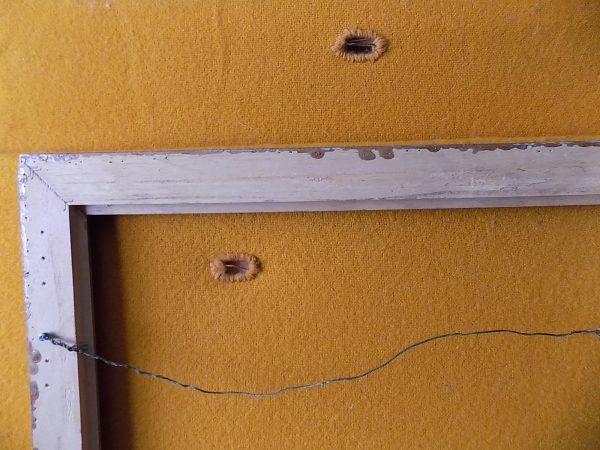
STORAGE
A solid framework limits your storage capacity. Textiles without a framework (with a hanging sleeve) can be laid flat or rolled within a shelving system. I have used both options and find framed textiles harder to accommodate, unless displayed on a wall. You will need to cover textiles in order to preserve the life of fabrics. I use a sheet.
POSTAGE
Framed structures will determine and limit your posting options. The larger the frame the greater the postage cost with additional weight to be factored in. Boxed and crate services can be found online with courier pick up. Bubble wrap is generally a good option for securing against damage in transit, with cardboard corners (buy or make yourself). Always factor in postage within your pricing system. Soft textiles can be rolled, bubble wrapped and boxed or bagged. A simpler and more cost effective way to transport because you can reduce the size.
I hope you have found this article interesting. Next time we will explore HOW TO CREATE A HANGING SLEEVE.

